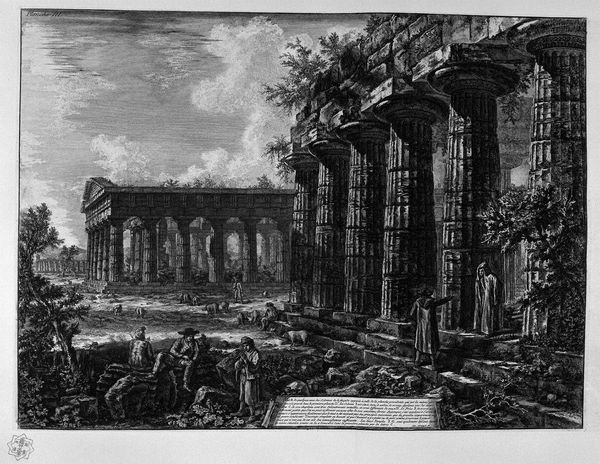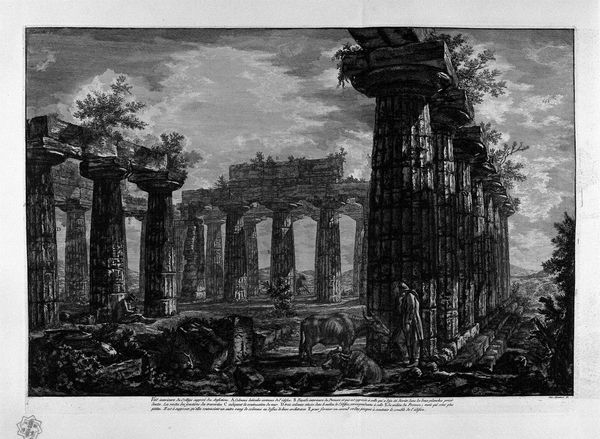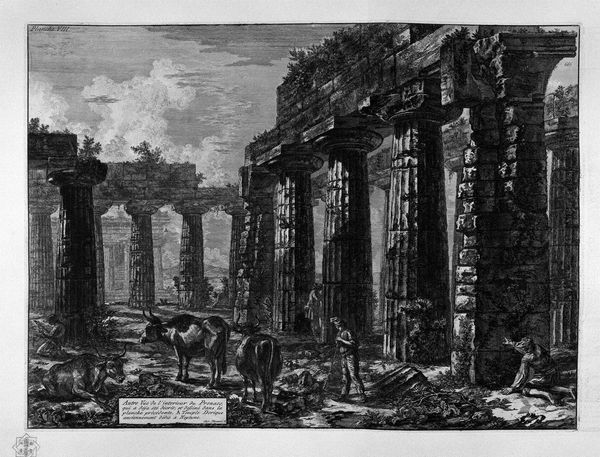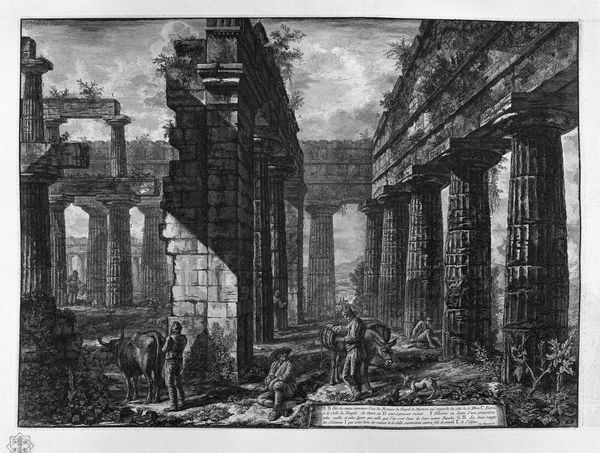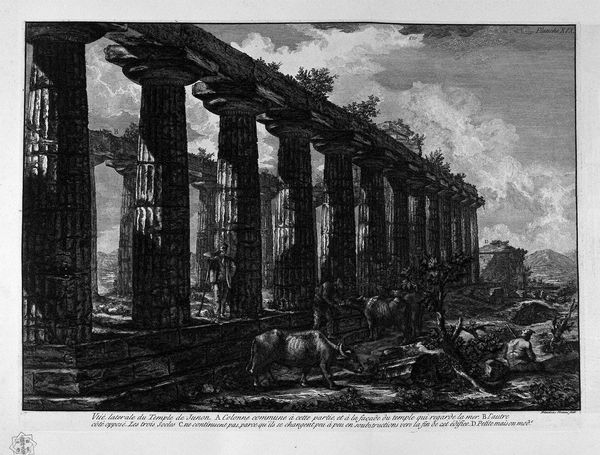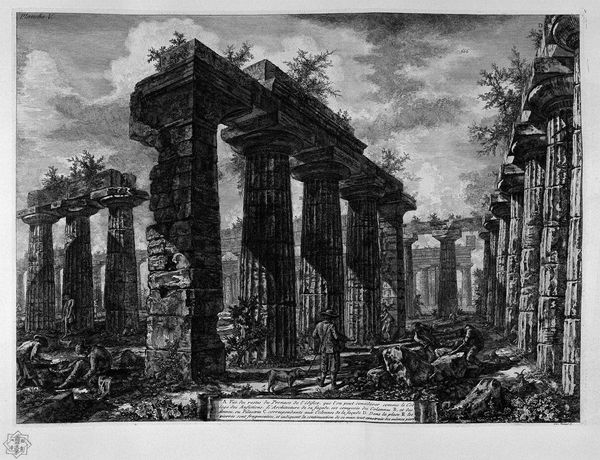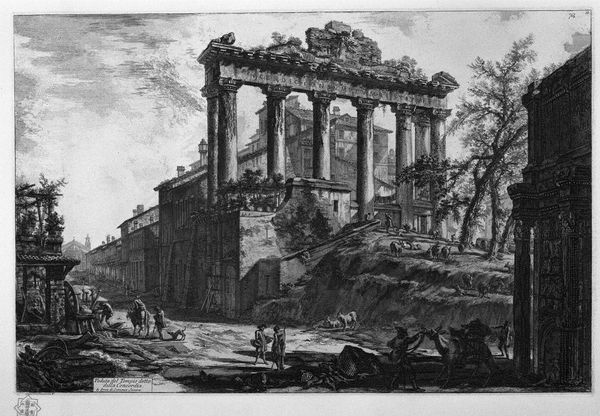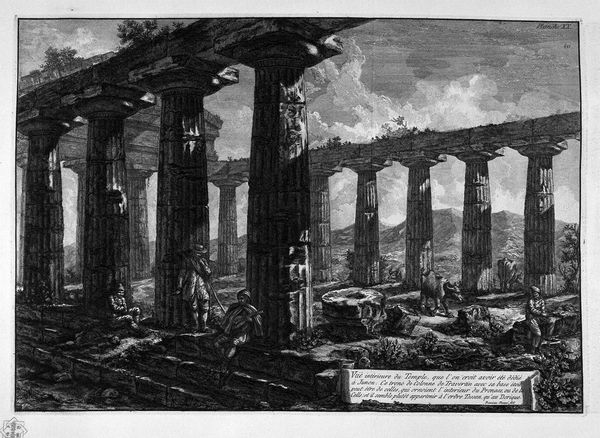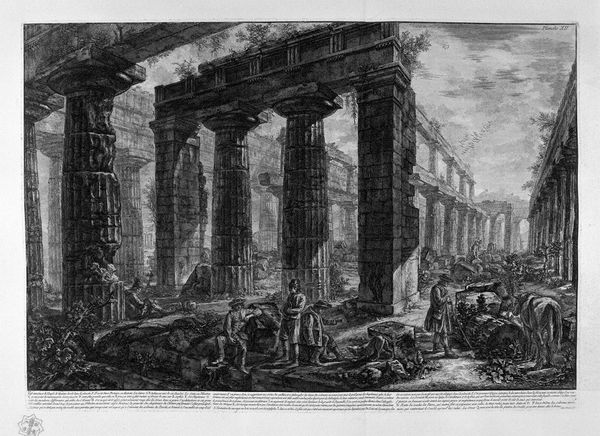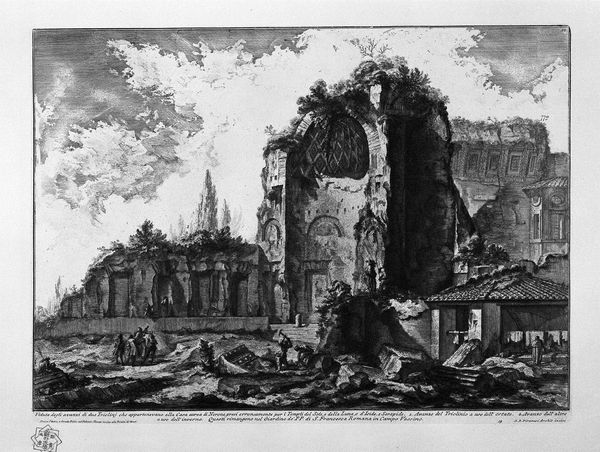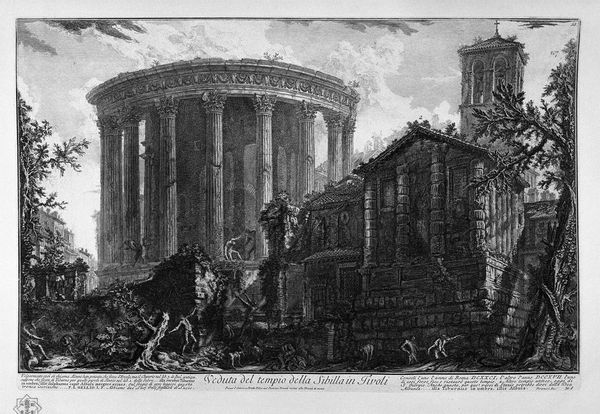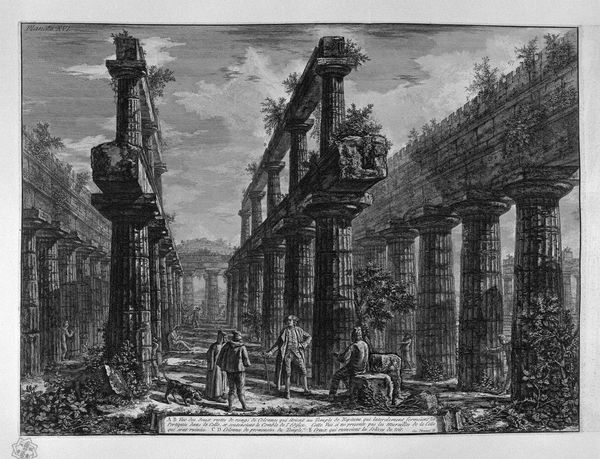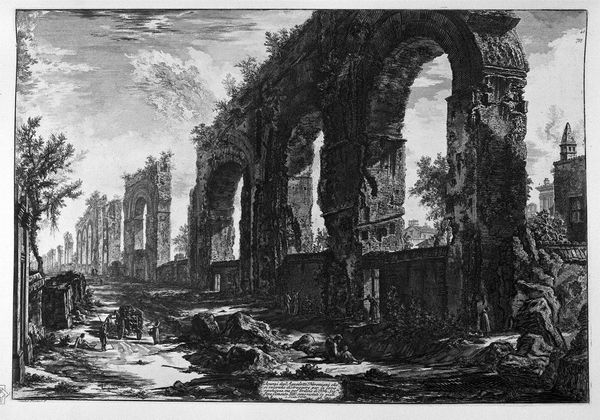
Table text: Following the inscriptions referred to in the previous plate and index tables contained in the work
0:00
0:00
drawing, print, etching, engraving
#
drawing
# print
#
etching
#
landscape
#
classical-realism
#
romanesque
#
ancient-mediterranean
#
history-painting
#
italian-renaissance
#
engraving
Copyright: Public domain
Editor: So, this is a print called "Table text: Following the inscriptions referred to in the previous plate and index tables contained in the work" by Giovanni Battista Piranesi. It looks like an etching or engraving, portraying Roman ruins. The scene has this melancholic, almost ghostly mood. I'm curious, what do you see in this piece beyond just ruins? Art Historian: This isn't just a landscape; it's a statement. Piranesi wasn't just documenting Rome; he was critiquing the present through the lens of the past. Notice how he juxtaposes the grandeur of the fallen columns with the mundane activities of the figures in the foreground. How do you think this contrast might be interpreted in the context of 18th-century Europe? Editor: I guess, on the one hand, it shows the overwhelming power of time, making the everyday feel insignificant, or maybe how even the grandest civilizations fall to ruin. Art Historian: Precisely! And what if we consider the political climate of Piranesi's time? Rome, once the heart of an empire, was then a collection of fragmented states under papal control. Piranesi, through his detailed and often exaggerated depictions, might be subtly rebelling against the decline, reminding viewers of a lost, powerful identity. Also, who do you think the ruins would affect different classes and cultures of people in the present day? Editor: That makes me think about the ethics of ruins. Maybe it would make those in power question whether the current status quo will become a romanticised ruin itself. I never considered how politically charged historical documentation can be! Thanks! Art Historian: It's crucial to recognize that art is never truly neutral; it always engages with the prevailing power structures and societal narratives, whether consciously or unconsciously. Editor: That’s fascinating. I’ll definitely look at art differently now!
Comments
No comments
Be the first to comment and join the conversation on the ultimate creative platform.
